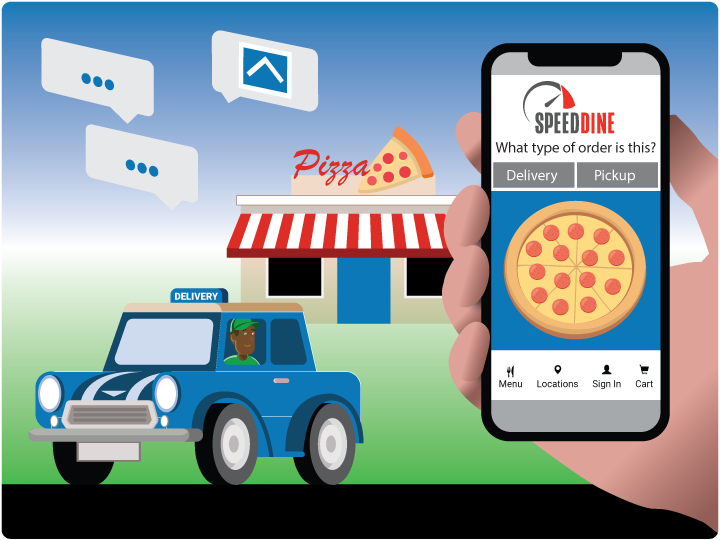1. Build Your Own Ordering Site
Setting up online ordering through your existing website is popular because your customer never leaves your website, and it removes the need for intermediary software. Commonly websites are built with software like GoDaddy, Wix, or WordPress.
Benefits
- Brand control: Showcase your brand's unique identity, while enhancing customer loyalty and recognition.
- Direct customer relationships: Collect customer data and engage directly with their patrons to enable personalized marketing campaigns and loyalty programs.
- Cost efficiency: Compared to third-party apps, this solution can be more cost-effective, as it eliminates commission fees.
Weaknesses
- Exposure: It can be more difficult to attract new customers without the widespread exposure provided by third-party apps.
- Technical Expertise: Building and maintaining an effective online ordering system requires technical knowledge or hiring a web development team, leading to additional costs.
2. Use a Third-Party App
Third-party apps have revolutionized the online ordering landscape, providing a convenient platform for customers to browse and order from multiple restaurants. Examples of third-party delivery platforms include DoorDash, GrubHub, and Skip The Dishes.
Benefits
- Wider Reach: Tap into an extensive customer base and expose your menu to a much larger audience.
- Greater Discoverability: Third-party apps often feature search and recommendation algorithms, making it easier for potential customers to discover new restaurants.

Research shows that using a third-party delivery platform has been found to raise restaurant sales volume by as much as 20%.
Weaknesses
- Commission Fees: Third-party apps charge commission fees for each order, which can significantly impact the profit margins of small businesses.
- Brand Dilution: Restaurants may experience a reduced sense of brand identity when listed alongside competitors on third-party platforms.
- Limited Control: Restaurants relying solely on third-party apps may have limited control over customer data, marketing initiatives, and customer experience.

Enhance your restaurant’s takeout process with branded packaging! Adding your restaurant’s logo or name is an excellent way to actively market your restaurant long after the customer’s order has left your store location.
3. Integrate with Your POS System
SpeedLine's online ordering site, SpeedDine, allows you to seamlessly connect your online orders with your in-house operations in a comprehensive and streamlined manner.
Benefits
- Streamlined Operations: Orders placed online are automatically synced with the restaurant's POS system, simplifying order management, inventory tracking, and kitchen operations.
- Enhanced Accuracy: Reduces the chances of errors caused by manual order entry, increasing order accuracy rates and customer satisfaction.
- Unified Reporting: Generate comprehensive reports that provide insights into sales, inventory, and customer preferences.
- Remove the middleman: Have a professional team build your online ordering site on your behalf to eliminate the need for hiring web developers or relying on third-party apps.
- Technical Support: Receive ongoing support to customize and update your online ordering site as you see fit with new upsells, cross-sells, promotions, or menu items as you see fit.
Weakness
- Use case considerations: Adopting a POS suite that offers online ordering integration is an important decision for your restaurant. Consider your business needs when determining which option best fits your use case.
Conclusion
Selecting the best online ordering system for your restaurant is a critical decision that impacts customer satisfaction, operational efficiency, and profitability. By weighing the benefits and weaknesses of each platform type, restaurant owners can make an informed choice that aligns with their unique requirements. Remember to evaluate factors such as brand control, cost efficiency, customer reach, and operational streamlining to find the optimal solution for your pizzeria!
To learn more about why pizzerias like NYPD Pizza Hunter’s Creek choose SpeedDine as their online ordering system, read the case study.
Posted on Thu, Jun 29, 2023 @ 07:06 AM.
Updated on June 29, 2023 @ 2:30 PM PST.


